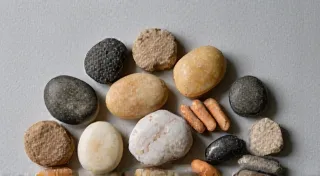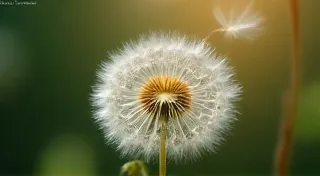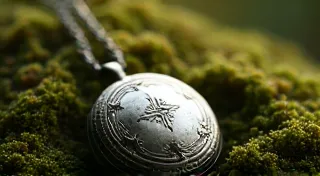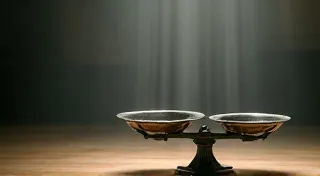The Legacy of Seeds: A Comparative Study of Heirloom Watermelon Lineages
There's a particular resonance I feel when holding an antique accordion. It’s not just the weight of brass and wood, the feel of aged bellows under my fingertips, but the echo of countless hands that have coaxed music from it before. Each button, each key, tells a silent story. Similarly, heirloom seeds carry a lineage – a history woven into their very DNA. And few fruits embody that lineage quite like the watermelon.
We’re often caught up in the pursuit of the "perfect" fruit – the uniform shape, the vivid crimson interior, the predictable sweetness. Modern breeding strives for that consistency. But in that pursuit, we often lose something vital: the story. Heirloom watermelons aren’t just delicious; they’re living testaments to centuries of agricultural adaptation, human ingenuity, and the enduring power of connection to the past. They are, in essence, botanical accordions—each variation a unique melody born from different environments and hands.
This isn't just about eating a slice of watermelon; it’s about tasting history. It’s about understanding the subtle differences in flavor and texture that generations have refined, and appreciating the craftsmanship – both botanical and human – that brought these varieties into existence.
Tracing the Roots: Early Watermelon History
The watermelon's journey is surprisingly complex. While the exact origin is debated, the most credible evidence points to Northeast Africa, specifically the region encompassing modern-day Sudan and Egypt. Wild watermelons were likely small, bitter fruits, quite unlike the massive, sweet varieties we enjoy today. They were initially consumed for their hydrating properties rather than their taste.
From Africa, watermelons spread along trade routes. The ancient Egyptians cultivated them, and depictions of watermelons appear in tombs dating back millennia. They were considered a symbol of fertility and abundance. The fruit travelled eastward to Persia and India, where further selection and cultivation took place.
The arrival of watermelons in the Americas is attributed to European explorers. Columbus brought them to the Caribbean, and from there, they spread throughout Central and South America. They quickly adapted to the New World's climate and soil, undergoing further transformations.

Notable Heirloom Watermelon Lineages
Let’s explore a few prominent heirloom watermelon varieties, each telling a unique story of adaptation and human intervention. These aren't just names on a seed packet; they're chapters in a continuing narrative.
Black Diamond: A Southern Treasure
The Black Diamond, originating from Charleston, South Carolina, is a fascinating example of Southern adaptation. Its deep, almost black rind hints at its history—likely a deliberate selection for heat tolerance and disease resistance in the challenging Southern climate. The flesh is a deep crimson, intensely sweet, and surprisingly firm. The story goes that it was a favorite of plantation owners and enslaved people alike, a shared taste of summer despite the circumstances of their lives. The resilience of this variety, passed down through generations, is a powerful reminder of the human capacity to find joy even in difficult times. The craftsmanship lies not only in the plant’s ability to thrive but in the careful, persistent selection by Southern gardeners over centuries.
Moon and Stars: A Celestial Delight
The Moon and Stars watermelon, originating in Georgia around the 1830s, is truly captivating. Its green rind is speckled with dark green “stars,” creating a mesmerizing pattern. It's thought that this striking appearance was intentionally cultivated – perhaps for novelty or as a marker of a prized variety. The story surrounding this watermelon often includes tales of competitions and prizes given for the most perfectly marked fruit. The "craftsmanship" here isn’t simply about growing a fruit; it’s about cultivating a piece of living art.
Charleston Gray: An Early Season Champion
The Charleston Gray is renowned for its early maturity – a crucial advantage for gardeners in areas with short growing seasons. Its light gray-green rind and pale pink flesh represent a pragmatic selection for speed and reliability. It's a testament to the needs of early American farmers who needed a dependable harvest quickly.

Crimson Sweet: A Sweet Southern Belle
The Crimson Sweet is perhaps one of the most widely recognized heirloom varieties. Developed in Virginia in the 1940s by Tom Reddings, it was initially a cross, but quickly established itself as an heirloom. It's loved for its vibrant red flesh, incredible sweetness, and consistent production. It highlights the modern intersection of tradition and innovation – how even in the pursuit of improvement, we can preserve the qualities that make a variety beloved.
Preserving the Legacy: Why Heirloom Watermelons Matter
Modern breeding often focuses on uniformity and yield. While this has its advantages, it also creates a vulnerability. A single disease or pest could wipe out entire crops of genetically identical plants. Heirloom varieties, with their diverse genetic heritage, offer a buffer against such risks.
Furthermore, the unique flavors and textures of heirloom watermelons are simply irreplaceable. They represent a connection to our agricultural past, a taste of history that we risk losing if we don't actively preserve them. Just as an antique accordion’s tone possesses a warmth and character impossible to replicate by modern synthesizers, heirloom watermelons offer a flavor profile distinct from their commercial counterparts.
Growing heirloom watermelons isn’t just about enjoying a delicious fruit; it’s about participating in a living tradition. It’s about respecting the ingenuity of past generations and ensuring that their legacy continues to nourish us for years to come. The careful selection and tending – the “craftsmanship” – of these varieties is an act of preservation, a way of honoring the hands that came before.

The Gardener’s Responsibility
Each of us has a role to play in safeguarding these botanical treasures. Whether it’s saving seeds from your harvest, sharing information with fellow gardeners, or simply choosing to purchase heirloom varieties, every action contributes to their survival.
The legacy of seeds isn’t just about the fruit they produce; it's about the stories they carry, the traditions they embody, and the connection they provide to our past. Let’s cultivate these legacies with the same care and reverence that we would treat an antique accordion – appreciating its craftsmanship, understanding its history, and sharing its music with the world.





